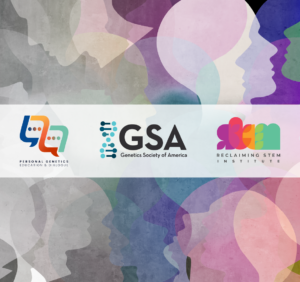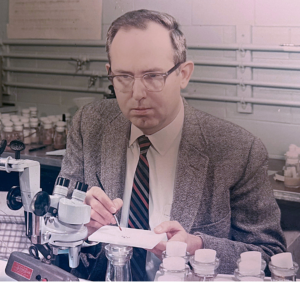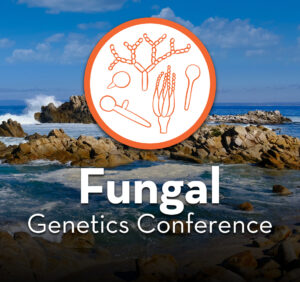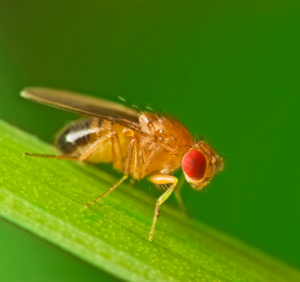Today’s guest post was contributed by Nele Haelterman, an assistant professor in the molecular and human genetics department at Baylor College of Medicine, where she runs a multidisciplinary team science project to understand the neuronal changes that take place in joints as we age, exercise, or develop joint disease. Nele loves combining science communication and advocacy: she runs a blog for early career scientists (ecrLife) and promotes open, reproducible science (reproducibility 4 everyone). You can follow Nele on LinkedIn.
New methods and technologies drive scientific progress. To accelerate genetic research, G3: Genes|Genomes|Genetics always keeps an eye out for novel resources and tools that will expand researchers’ ability to perform genetic studies across model organisms. Here, we highlight a selection of the latest genetic resources that are now available to the genetics community.
4th chromosome fly mutants up for grabs!
The Fourth Drosophila chromosome is quite different from the other fly chromosomes: it is small, contains large regions of heterochromatin, and does not undergo meiotic recombination. For these reasons, the chromosome remained mostly “off limits” for drosophilists, who have only characterized a handful of its genes so far.
This all changed recently, when the 4th officially opened for business. In the February 2024 issue of GENETICS, Stuart Newfeld and colleagues at the Fourth Chromosome Resource Project (FCRP) published the first resources to study 4th genes, including strains to conditionally express the fly gene or its human homolog, investigate endogenous gene expression and function, and perform clonal analysis.
Now, Newfeld’s group further expands this off-the-shelf 4th chromosome collection with loss-of-function alleles. The team employed a CRISPR-based strategy to mutagenize most of the 80 protein-encoding genes on the 4th, generating 119 stocks containing frame shifts and small, in-frame deletions. The consequences of these mutations can be studied at the level of the whole organism or the individual cell, because they were introduced on an FRT-bearing chromosome with repressible markers to enable clonal analysis.
These new strains along with previously generated FCRP resources are available to the fly community through the Bloomington or Kyoto stock centers. Together, these stock sets essentially unlock the 4th chromosome, constituting an invaluable resource for the fly community.
Tools to study neural circuitry of smell in the mosquito
Scientists have long studied the neurobiology of smell in mosquitos in hopes of reducing these pesky arthropods’ ability to find their next blood meal and transmit disease. To do this, researchers are adapting powerful tools used to study Drosophila gene function and are introducing them to the mosquito genome. In G3’s January 2025 issue, Shankar et al. report a series of optimized genetic tools to study the neurobiology of olfaction in the yellow fever mosquito, Aedes aegypti.
Shankar and colleagues combined CRISPR technology with the binary expression system QF2-QUAS to generate targeted, in-frame T2A-QF2 insertions in several chemoreceptor genes. By combining these transgenic mosquito strains with QF2-dependent fluorescent reporters and (photoactivateable) calcium indicators, the team outlined an effective workflow for functional and neuroanatomical mapping of olfactory sensory neuronal circuits in A. aegypti. These genetic tools are now available to the scientific community to study, among others, the molecular and cellular basis underlying the yellow fever mosquito attraction to humans.
Streamlining genome editing in budding yeast
Scarless genome editing, a technology used to genetically alter the yeast genome without leaving a trace, has transformed genetic engineering in yeast. Indeed, methods like pop-in/pop-out (PIPO) remove the selection marker that is used to identify cells with the desired genetic modification, freeing up the use of selectable marker for subsequent genetic manipulations.
To mediate PIPO editing, researchers use PCR products, oligonucleotides, or plasmid-based DNA sequences. While plasmids provide a more stable and reproducible platform, designing them is tedious and error-prone because it remains a mostly manual process.
To streamline PIPO plasmid design, Stojkovic et al. created PIPOline, a computational tool to generate the most efficient plasmid for seamless editing of a desired genetic locus. The authors next used PIPOline to generate a library of optimal plasmids for tagging or deleting nearly every yeast gene. These resources reduce current barriers for robust PIPO-based gene editing in budding yeast.
References
A new Drosophila melanogaster research resource: CRISPR-induced mutations for clonal analysis of fourth chromosome genes
Bonnie M Weasner, Brandon P Weasner, Kevin R Cook, Michael J Stinchfield, Shu Kondo, Kuniaki Saito, Justin P Kumar, Stuart J Newfeld
G3: Genes|Genomes|Genetics. January 2025; 15(3).
DOI: 10.1093/g3journal/jkaf006Automated plasmid design for marker-free genome editing in budding yeast
Lazar Stojković, Vojislav Gligorovski, Mahsa Geramimanesh, Marco Labagnara, Sahand Jamal Rahi
G3: Genes|Genomes|Genetics. December 2024; 15(3).
DOI: 10.1093/g3journal/jkae297Optimized genetic tools for neuroanatomical and functional mapping of the Aedes aegypti olfactory system
Shruti Shankar, Diego Giraldo, Genevieve M Tauxe, Emma D Spikol, Ming Li, Omar S Akbari, Margot P Wohl, Conor J McMeniman
G3: Genes|Genomes|Genetics. January 2025; 15(3).
DOI: 10.1093/g3journal/jkae307































